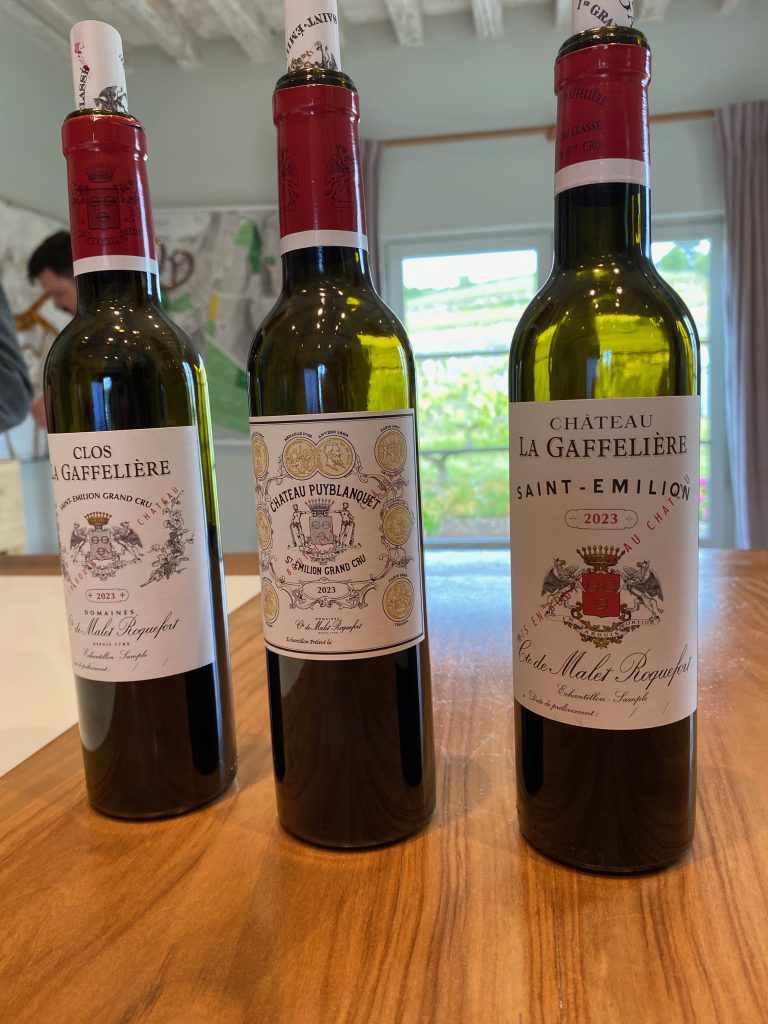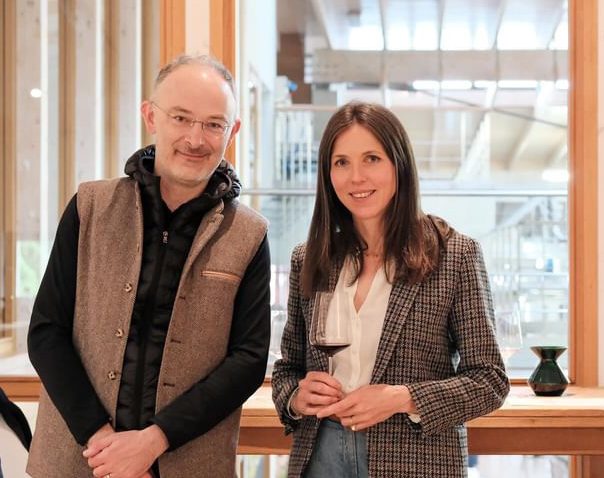このウェブサイトでは、お客様に最高のユーザー体験を提供できるよう、クッキーを使用しています。クッキーの情報は、お客様のブラウザに保存され、お客様が当ウェブサイトに再度訪問された際に、お客様を認識したり、お客様が当ウェブサイトのどのセクションを最も興味深く、有用であると感じるかを当チームが理解するのに役立つなどの機能を果たします。
En primeur: Haut-Médoc, Saint-Émilion, Pessac-Léognan and Sauternes wines released
The early campaign flurry of releases continues, with leading wines from Haut-Médoc, Saint-Émilion, Pessac-Léognan and Sauternes all set to be released today (Friday 3 May), following the crucial release of wines from Domaines Baron de Rothschild yesterday.

Prior to the publication of appellation-by-appellation profiles, here are my tasting notes where they have not already been published.
格付けについて
This year, as is now my habit, I have again decided to provide an indicative rating for each wine alongside the published comment. All such comments and ratings are necessarily subjective (they cannot be anything else when one thinks about it). I would urge you to look at the two together and, if anything, to privilege the comment over the rating. My aim is more to describe the wine in the context of the vintage, the appellation and recent vintages of the same and similar wines, rather than to judge the wine per se.
The ratings, of course, reflect my subjective evaluations and relative preferences between wines. Your palate is likely differ from mine. I hope that my comments give you at least enough information to be able to recalibrate my ratings and, in so doing, to align them more closely to your own palate. To give an example: if the idea of the ‘new classicism’ leaves you cold, you may well wish to discount the (typically high) ratings I have given to wines described in such terms.
2023, like both of its predecessors is, of course, a far from homogeneous vintage – and, consequently, my ratings span a considerable range (from the very top of the scale downwards). I see little interest, either for the consumer or the producer, in publishing very low scores. Consequently, I have decided not to publish scores for classed growths (or equivalent wines) that I have rated below 90 (here the range 89-91) and for crus bourgeois (or equivalent wines) that I have rated below 89 (here the range 88-90). Where no rating is published, the wine would have scored below these thresholds. Where my written assessment of the wine might also have proved unflattering to the property, I have simply chosen to publish neither the commentary nor the rating.
Finally, élevage is likely to be very important in determining the quality in bottle of these wines. I am no soothsayer and cannot predict how that will turn out (another reason for the use of banded ratings). But all en primeur ratings should be treated with caution and taken with a certain pinch of salt.
テイスティングノート
Bouscaut blanc (Pessac-Léognan; 61% Sémillon; 39% Sauvignon Blanc – I think, as the technical sheet adds up to 120%!; a final yield of 40 hl/ha; 13.5% alcohol; tasted at the UGCB press tasting at the Cité du Vin). Sadly there is no red here this year, but the quality of this must provide at least a little compensation. One notices immediately that this is less oaky than it often is or used to be. A little closed and intimate aromatically, but very distinct on the palate. Lime and lime zest, assorted white flowers, a little almond oil, linden, greengage. Decent concentration in the mid-palate but, crucially, this never risks becoming fat, so charged is it with fresh citrus acidity. A subtle change in style with rather less oak and more personality as a consequence. Intriguing, distinct and highly recommeded. 92-94.
Calicem (Saint-Émilion; 100% Merlot; the 8th production of this wine from a single parcel adjoining Angélus and Beauséjour, this has a very consistent personality now; Thomas Duclos consults here; a final yield of c. 30 hl/ha from vines of around 60 years of age; vinified in 500 litres new oak barrel from 4 tonnellerie and with pigeage à la main; pH 3.65; 14% alcohol). Shimmering and pure aromatically, with a very pure blend of red and darker berry fruits, the pleasing ripeness imparting a gentle natural sweetness that is not surprising when you consider where the parcel is located. Peony. Walnut oil. Cassis and raspberry, a little stone fruit with more aeration. This has a lovely compact frame, beautifully-filled with plump and plush berry fruits, nice pixilation and a gentle structure, the calcaire tannins gathering on the finish to give this a delightfully powdery chalky finale. Glossy. Long and quite lifted. Pure, precise and very well-made. Succulent. One of the strongest monocépage wines of the appellation. 94-96.
Couvent des Jacobins (Saint-Émilion; 84% Merlot; 11% Cabernet Franc; 5% Petit Verdot; a final yield of 40 hl/ha; tasted first at the Association des Grands Crus Classes at Dassault, then with Xavier Jean in the historic cloister of the Couvent itself). An amazing ascent to the summit is underway here and this is still a work in progress, but it’s perhaps the finest I’ve yet tasted from Couvent, with Thomas Duclos playing an important role as consultant. Incense, rose petals, wisteria and peonies, a little violet and a gracious plump stone and dark berry fruit – damsons and blueberries, a little bramble too; a nice combination of cracked peppercorns too. The Petit Verdot brings a little strictness of the mid-palate and maybe needs a little more time to fully bed in, but this is complex, layered, superb in its tannin management and incredibly refined. Bravo. The best yet from here and a veritable coup de coeur. 93-95.
Doisy Védrines (Sauternes; 85% Sémillon; 12% Sauvignon Blanc; 3% Muscadelle; a final yield of 9 hl/ha; 14% alcohol; tasted at the UGCB press tasting at the Cité du Vin). Intensely floral in its aromatic profile. Mimosa. Honeysuckle. Saffron. Acacia honey. Pineapple and confit pineapple, a little passionfruit and guava too. Fresh and lithe on the palate, with just enough bite from the zesty citrus elements to rein this in. Nice and tense and a little different. A vintage in which the terroir character of each wine is very present. 91-93+.
La Lagune (Haut-Médoc; 65% Cabernet Sauvignon; 35% Merlot; strong mildew pressure was well-managed, the team now highly experienced in an all too familiar fight; a final yield of 30 hl/ha; 13.5% alcohol; tasted at the UGC press tasting at the Cité du Vin and with Caroline and Delphine Frey at the property; certified organic and biodynamic). There is no Petit Verdot in the grand vin this year, giving this perhaps an additional harmony at this nascent stage. We could easily be in Margaux here as this has a lovely highly expressive but still delicate and refined wild florality to it. Beautifully expressive and vivid aromatically, even when tasted under leaden skies. Lovely white almond and frangipane notes, walnut shell too. Silky and creamily textured. We are not so much in the parfumier’s boudoir as in the field from which the flowers themselves were sourced. Damson and bramble too. Autumnal fruits. This has quite a tight frame accentuating the impact on the attack and the density and concentration of the mid-palate. Well-structured and with significant aging potential despite the elegance that is already present. Impressive stuff. The wine of the appellation, as it so often is. 93-95.
Puyblanquet (Saint-Émilion; 80% Merlot; 20% Cabernet Franc; just 11 of the 19 hectares here are in production with significant replanting underway; just in front of Pressac, next to Boutisse; 14.2% alcohol; tasted at La Gaffelière). Beautiful in its intensely dark fruited aromatic profile. Plump but sleek and plush. Brambles and blackberries. A hint of cedar and graphite. Lovely texture and nicely chiselled. Very pure and lithe. Excellent. Luminous at the core and with lovely powdery chalky tannins on the finish. This gets better each year. 92-94.


